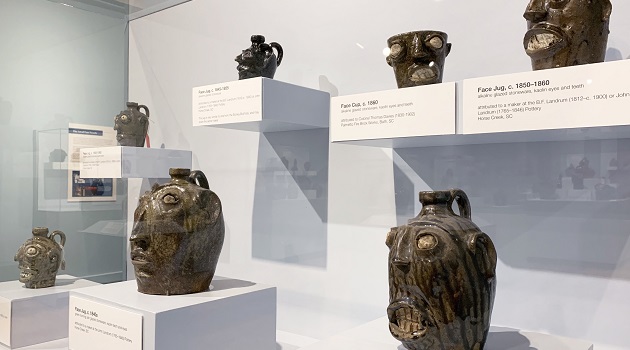The South Carolina State Museum has announced the opening of its new exhibition, Early American Face Vessels from the George H. Meyer Collection.
Featuring more than 100 early American face vessels, this exhibition offers an opportunity to trace the development of this tradition as it unfolded in regions east of the Mississippi River and Texas, from the 1820s to circa 1945, including around 20 early face vessels from South Carolina.
“The face vessels in this exhibition are a uniquely American art form,” said State Museum Curator of Art, Amy Chalmers. “The objects represent important aspects of American history, and help illustrate how individuals, technologies, and ideas traveled throughout the United States.”
George H. Meyer acquired more than 100 early American face vessels over 35 years. This is the first time this collection has been exhibited in its entirety, and it is also the first exhibit of this scale focused specifically on early American face vessels. On display are face vessels from Edgefield, South Carolina, which was the site of a significant and thriving pottery industry in the early to late 19th century. By the mid-1840s, these potters were primarily enslaved craftspeople who combined their traditional African culture with an Anglo American one.
“This tradition in pottery has very important roots in South Carolina,” said Chalmers. “Seeing face vessels from this state next to those from other regions is a unique opportunity.”
Guests to the exhibit will see a collection of face vessels on display, from tiny pipes to large statuesque pieces, and with a variety of designs and expressions. There are even those that served to support specific social and political issues, including “temperance jugs” that preceded Prohibition.
Early American Face Vessels is free with museum membership or general admission. General admission to the South Carolina State Museum is $8.95 for adults; $7.95 for Seniors; $6.95 for children; infants 2 and under are free.
Photo: Early American Face Vessels from the George H. Meyer Collection. Image courtesy of the South Carolina State Museum



